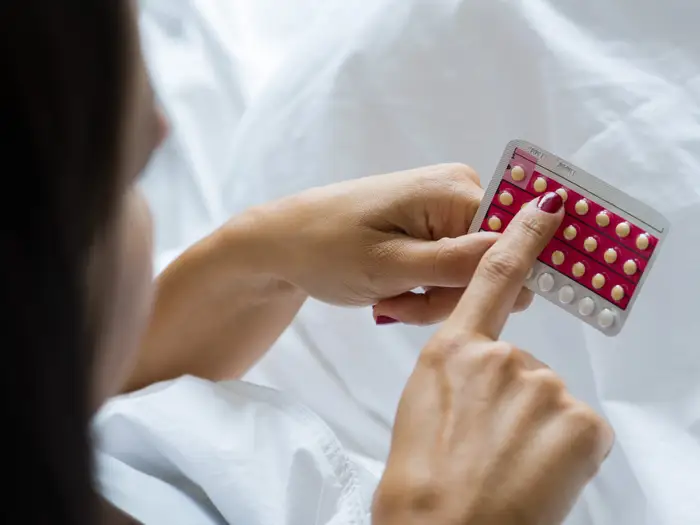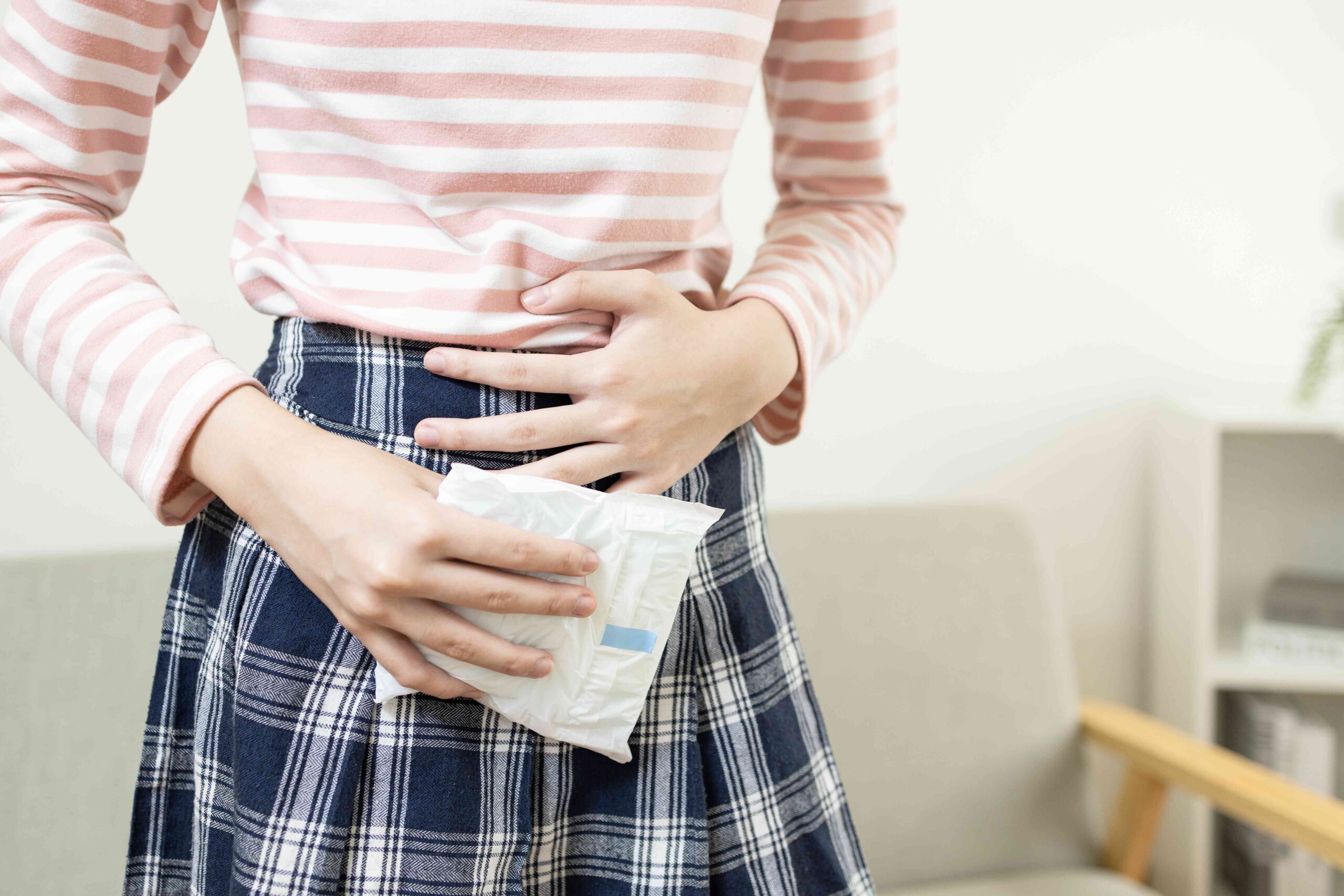Spotting during ovulation can be confusing and even a little worrying, especially if you’re not sure what’s causing it. For many women, light bleeding or pinkish discharge around the middle of their cycle is completely normal and often linked to natural hormonal changes. However, spotting can also signal other factors, from minor cervical irritation to underlying health conditions that may need attention.
In this article, we’ll explore the 10 most common causes of spotting during ovulation so you can better understand what’s happening in your body and know when it’s time to seek medical advice.
Understanding Ovulation Spotting
Ovulation spotting is a light form of vaginal bleeding that occurs around the middle of a woman’s menstrual cycle, typically 10 to 16 days after the start of her last period. It happens when the ovary releases a mature egg, and hormonal shifts cause subtle changes in the reproductive system. The spotting is usually lighter than a period and may appear as pink, red, or brown discharge mixed with cervical mucus. Unlike menstrual bleeding, it rarely lasts longer than a day or two.

For some women, ovulation spotting is a normal part of their cycle and can even serve as a sign of fertility, indicating the most fertile days of the month. Others may never notice it at all, and that is also completely normal. The key difference is that ovulation spotting is typically very light, short-lived, and occurs consistently mid-cycle rather than at the beginning or end of menstruation.
Recommended: Will an Ovulation Test Be Positive If Pregnant?
While ovulation spotting is usually harmless, it’s important to pay attention to the pattern, color, and duration of the bleeding. Spotting that is heavy, prolonged, or accompanied by pain could point to other issues such as hormonal imbalances, cervical irritation, or underlying health conditions. Understanding what ovulation spotting looks like can help women distinguish between normal mid-cycle changes and bleeding that requires medical attention.
10 Causes of Spotting During Ovulation
1. Hormonal Fluctuations
During ovulation your body experiences natural changes in hormone levels, especially estrogen and progesterone. As estrogen peaks to trigger the release of an egg, progesterone starts to rise. This shift can sometimes cause the uterine lining to shed slightly, leading to light spotting. Many women experience this as the most common and harmless cause of mid-cycle spotting. The amount is usually very light and may only last a few hours. It is more of a hormonal adjustment than an actual bleed.
If spotting becomes heavy or irregular outside of ovulation it may signal a deeper hormonal imbalance that should be evaluated by a doctor.
2. Follicle Rupture
Ovulation occurs when a follicle in the ovary bursts to release a mature egg. This rupture can sometimes cause a small amount of bleeding inside the ovary. The blood may mix with cervical mucus and exit as spotting. The spotting caused by follicle rupture is usually pink or light red and doesn’t last long. Some women may also feel mild abdominal cramping on one side, known as mittelschmerz pain, along with the spotting.
This is considered a normal part of the ovulation process and not a cause for concern.
3. Sudden Drop in Estrogen
Just before ovulation estrogen levels can drop briefly before progesterone rises. This dip may cause the uterine lining to destabilize slightly and shed, leading to a small amount of spotting. This spotting is usually very light and may appear as a faint pink tinge in cervical mucus. Many women do not even notice it unless they track their cycle closely.
Recommended: Does Female Masturbation Affect Ovulation?
It resolves on its own once hormone levels balance again.
4. Cervical Changes
During ovulation the cervix becomes softer and opens slightly to allow sperm to pass through. The increased sensitivity and greater blood flow to the cervix can cause light bleeding in some women. Spotting may be triggered by activities like exercise, vaginal exams, or sexual intercourse, which can irritate the cervix.
If the spotting is mild and occurs only mid-cycle it is usually harmless. Persistent or painful bleeding may point to other cervical issues that need medical review.
5. Birth Control and Fertility Medications
Hormonal birth control such as pills, IUDs, or implants can affect the body’s natural hormone balance. Even when ovulation occurs these medications may cause breakthrough bleeding that looks like ovulation spotting. Fertility treatments and ovulation-stimulating drugs can also increase the chance of spotting because they alter hormone levels more dramatically.

If spotting begins after starting or changing medication it is worth tracking the pattern, since the body often adjusts within a few months.
6. Sexual Intercourse During Ovulation
Sex during ovulation may sometimes lead to spotting. The cervix is more sensitive and filled with blood at this stage of the cycle, which makes it easier to bleed slightly after penetration. This spotting is usually light and short-lived, appearing within 24 hours after sex. It often shows up as pink or red discharge mixed with cervical mucus.
Frequent, painful, or heavy bleeding after sex may indicate cervical polyps or infections and should be checked by a doctor.
7. Vaginal or Cervical Infections
Infections such as bacterial vaginosis, yeast infections, or sexually transmitted infections can irritate the vaginal or cervical tissues. When this happens light bleeding or spotting may occur during ovulation, when the cervix is already more sensitive. Spotting from infection is often accompanied by unusual discharge, odor, itching, or discomfort. These signs make it easier to distinguish from normal ovulation spotting.
Prompt treatment is important since untreated infections can affect reproductive health and fertility.
8. Polycystic Ovary Syndrome (PCOS)
PCOS is a hormonal disorder that can cause irregular cycles and unexpected spotting. Women with PCOS often have higher levels of certain hormones, which can disrupt normal ovulation and trigger mid-cycle bleeding. The spotting may not always align with ovulation and can sometimes be mistaken for period irregularities. Symptoms such as acne, weight gain, and excess hair growth often appear alongside spotting.
If ovulation spotting happens often with other PCOS symptoms a medical checkup and hormonal testing are recommended.
9. Endometriosis or Fibroids
Conditions like endometriosis and uterine fibroids can lead to ovulation spotting. These growths affect the uterine lining and blood vessels, making them more prone to bleeding during hormonal changes. Women with these conditions may experience more than light spotting. Painful periods, pelvic discomfort, or heavy bleeding often occur along with mid-cycle spotting.
Recommended: Is Spotting a Sign of Early Pregnancy or Miscarriage?
Since these conditions require medical management it is important to seek care if spotting is accompanied by chronic pain or heavy flow.
10. Stress and Lifestyle Factors
Stress, sudden weight changes, extreme exercise, or poor diet can disrupt hormone balance. Ovulation may still occur but the shifts in hormones may trigger unexpected spotting. Stress raises cortisol levels, which interfere with estrogen and progesterone regulation. This disruption may cause the uterine lining to shed slightly, resulting in spotting.
Improving lifestyle habits such as managing stress, eating a balanced diet, and getting enough rest often reduces or eliminates this type of mid-cycle bleeding.
Tips on How to Manage Ovulation Spotting
Ovulation spotting is usually harmless and does not require medical treatment, but there are practical ways to manage it and stay comfortable.
1. Track Your Cycle
Keep a period or fertility tracker app to log your cycle days and any spotting. This helps you notice patterns and distinguish between normal ovulation spotting and irregular bleeding that may need medical attention.
2. Use Panty Liners for Comfort

Since ovulation spotting is typically light, a panty liner is usually enough to stay clean and confident. This also makes it easier to monitor the color and amount of discharge.
3. Maintain Good Hygiene
Changing liners regularly, wearing breathable cotton underwear, and staying hydrated can help you feel fresh and prevent irritation during spotting.
Recommended: Spotting vs. Your Period: How to Tell the Difference
4. Manage Stress Levels
Stress can make hormonal fluctuations worse. Relaxation techniques such as deep breathing, yoga, or even short daily walks can help balance stress hormones and reduce spotting triggered by lifestyle factors.
5. Support Hormone Health Through Diet
Eating a balanced diet rich in whole grains, fruits, vegetables, and lean proteins supports hormone regulation. Limiting processed foods and excess caffeine may also help keep your cycle steady.
6. Avoid Irritation During Sensitive Days
During ovulation the cervix is softer and more sensitive, so rough intercourse or certain exercises may trigger spotting. Being gentle during this phase can minimize bleeding.
7. Consult a Doctor if Needed
If spotting is heavy, prolonged, or accompanied by pain, unusual discharge, or irregular cycles, seek medical advice. A healthcare provider can check for conditions such as PCOS, fibroids, or infections that may be causing the bleeding.
Conclusion
Spotting during ovulation may feel unexpected, but for many women it is simply part of the natural changes that happen in the middle of the menstrual cycle. Light bleeding caused by hormonal shifts, cervical sensitivity, or the release of an egg is usually harmless and often goes away on its own. Some women may never notice it at all, while others experience it regularly as part of their cycle.
Even though ovulation spotting is often normal, it is always important to pay attention to how your body responds each month. Keeping track of when spotting happens, how long it lasts, and whether it comes with pain or other symptoms can help you understand your health better. If you notice that the bleeding is heavy, persistent, or irregular, reaching out to a healthcare professional is the best step for reassurance and care.
By knowing the common causes and learning how to manage them, you can feel more confident about what is happening in your body and take better control of your reproductive health.
